The distinctive styling of the Alco PA diesel-electric locomotives made them transition-era icons. These instantly recognizable passenger locomotives are now available in PA-1 and PB-1 versions from Wm. K. Walthers as part of the firm’s accurately dimensioned, modestly priced WalthersMainline series.
WalthersMainline models may not have all the factory-applied details of a WalthersProto model, but they do share the same top-of-the line mechanism. Our review samples also came with factory installed ESU Sound & DCC decoders that made the Alcos growl on our direct-current (DC) and Digital Command Control (DCC) test layouts.
The prototype. Alco introduced the 2,000 hp PA-1 passenger locomotive and its cabless booster, the PB-1, in 1946. Versions rated at 2,250 hp, the PA-2 and PB-2, followed in 1950. All Alco PAs used the firm’s 16-cylinder 244 engine.
Although their good looks made them railfan favorites, the PAs were plagued by maintenance issues. The Alcos didn’t sell nearly as well as their Electro-Motive Division counterparts.
Between 1948 and 1952 the New York Central received eight PA-1s, seven PA-2s, four PB-1s, and one PB-2. All were retired by the mid 1960s.
The model. The Walthers PA and PB dimensions match official Alco PA diagrams. When coupled the diaphragms of the A and B units are about a scale foot apart, which allows the locomotives to negotiate tight model railroad curves.
The plastic truck sideframes accurately model Alco’s A-1-A trucks, including the placement of the separately applied brake cylinders. (Note that on the model all axles are powered.) The blackened metal wheels are a prototypical 40 scale inches in diameter.
Most of the detail on the model is molded in, including well-defined rivet seams and side air intake grills. Separately applied detail parts include the air horns, sprung B-end diaphragm, and a rooftop radiator fan with a see-through grill.
The body shell includes drill starter points for those that wish to add separate handrails and grab irons. These parts are included in a separate Alco PA-PB detail kit (Walthers part no. 910-252, $9.98).
There’s clear plastic glazing in all the windows. The windshields feature molded windshield wiper detail.
The two-tone gray paint scheme matches prototype photos. There’s sharp color separation between the stripes. All lettering is correctly placed and clearly printed, including Dpa-2a and Dpb-2a under the road numbers of the A and B units, respectively.
Each locomotive weighs more than 1.5 pounds. The dual-flywheel equipped can motor is enclosed by a die-cast metal chassis. Driveshafts connect the motor to the truck gearboxes. The WalthersProto-style mechanism includes helical gears, which provide smoother and quieter operation than straight cut gears.
The ESU Sound & DCC decoder is plugged into a 21-pin socket on the main printed-circuit (PC) board, which is attached to the chassis by four screws. Leads run from the PC board to the surface-mount light-emitting diode (LED) board that illuminates the headlight. A plastic, downward facing 28mm round speaker enclosure is screwed to the rear of the chassis.
The combination of a powerful mechanism and hefty weight give the HO Alco an impressive 4 ounce drawbar pull that’s equivalent to 20 free-rolling HO scale 85-foot passenger cars on straight and level track. A single HO PA-1 also hauled a 12-car passenger train up a 3 percent grade without stalling.
The model’s speed test results are noted above. Although the prototype could be geared for as fast as 117 mph, the HO locomotive’s 65 scale mph top speed is more than fast enough for the compressed mainline distances of a model railroad.
DCC operation. The dual-mode ESU Sound & DCC decoder isn’t as fully featured as an ESU LokSound decoder. It’s also not compatible with the ESU LokProgrammer interface or software. However, the decoder offers several user- triggered functions and programmable configuration variables (CVs). A printed instruction sheet was included with the model that lists the supported CVs.
Function 8 triggers a start up sequence for the 244 diesel engine, which sounds like prototype recordings I’ve heard. I used function 9, Drive/Hold to keep the locomotive speed constant while I used the throttle knob to manually notch the engine rpm. I especially enjoy this feature when I want to simulate the sounds of a locomotive starting a train or working hard going up a grade. The other user-triggered functions include the directional headlight, a compressor, the bell, and the horn. There are two different Alco bell options that can be selected with CV164. In addition to the default Wabco single-chime, there are four other horn sounds available: a Leslie A-200, S3L, and S5, and a Nathan M5. The horns are selected by programming CV163.
I easily programmed all of our review samples to their cab numbers. I then advance consisted all three units using CV19. The decoder also supports CVs21 and 22 for consist function control.
DC operation. On our DC test track, sounds and lights came on after I applied 7V. At 9V the locomotive started moving smoothly. Diesel engine sounds revved up or down as I increased or decreased the power pack, respectively. A quick decrease in the throttle triggered a squealing brake. The headlight operates according to the direction of travel.
There is some built-in momentum for DC operation where the engine realistically increases its rpm level before the locomotive moves. To use other effects in DC requires an analog sound controller, such as the Model Rectifier Tech 6.
Available in some of the most eye-catching paint schemes of the era, as noted above, these powerful Alcos from Walthers would be right at home on the point of a postwar streamliner.
Price: DCC and sound: PA-PB set, $419.98; single PA unit, 219.98.
DC, no sound: PA-PB set, $299.98;
single PA unit, $159.98.
Plated warbonnet versions:
DCC and sound: PA-PB sets, $459.98; single PA unit, $239.98.
DC, no sound: PA-PB sets, $329.98; single PA unit, $179.98.
Detail kit available for $9.98.
Manufacturer
Wm. K. Walthers Inc.
5601 W. Florist Ave.
Milwaukee, WI 53218
walthers.com
Era: 1946 through 1960s
Road names: New York Central; New York, New Haven & Hartford; Southern Ry. (PA-1 only).
Plated warbonnet versions: Atchison, Topeka & Santa Fe; Delaware & Hudson
Features
- 21-pin DCC socket
- All-wheel drive and electrical pickup
- Die-cast metal chassis
- Dual mode ESU Sound & DCC decoder (DCC version only)
- Five-pole skew wound motor with dual brass flywheels
- Light-emitting diode headlight
- Minimum radius: 18″
- Proto-Max metal couplers at correct height
- RP-25 contour metal wheels
- Weight: 1 pound, 10.8 ounces (PA-1),1 pound 10.4 ounces (PB-1)





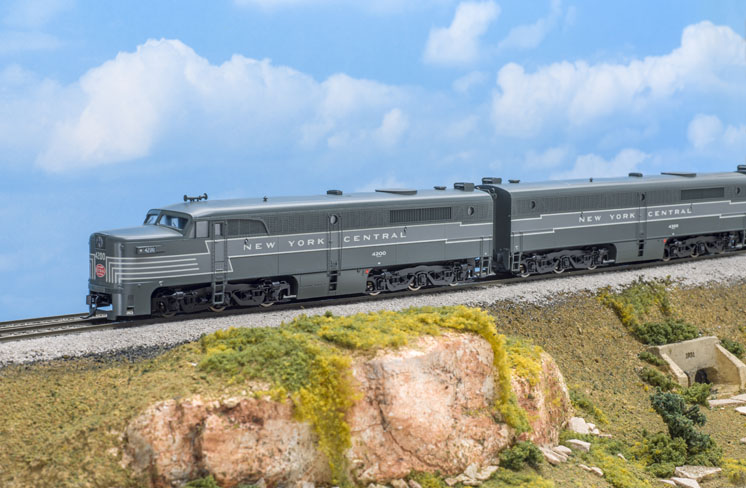

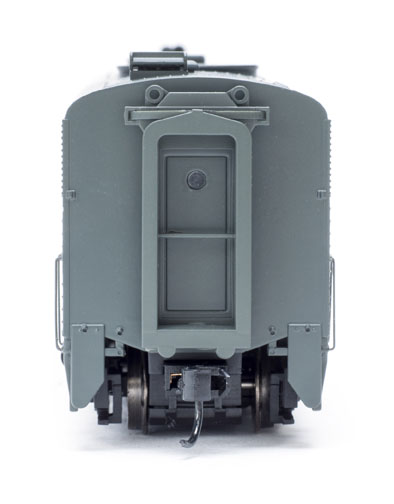
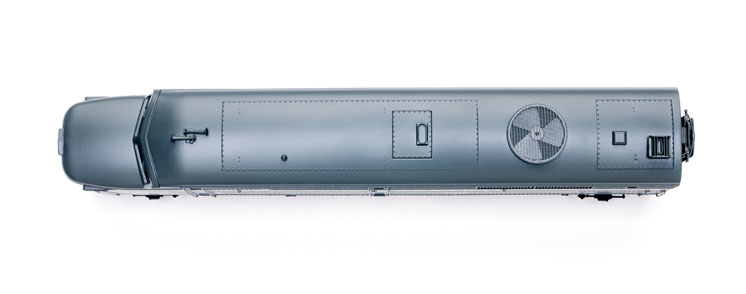
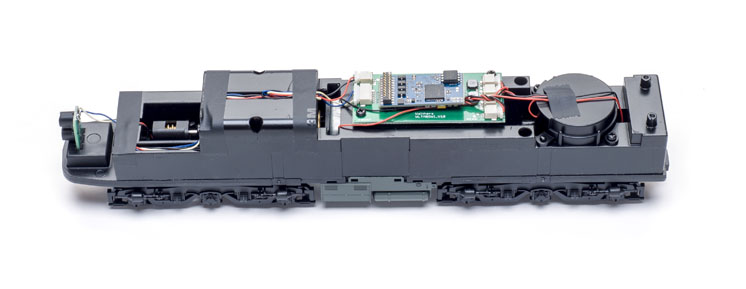
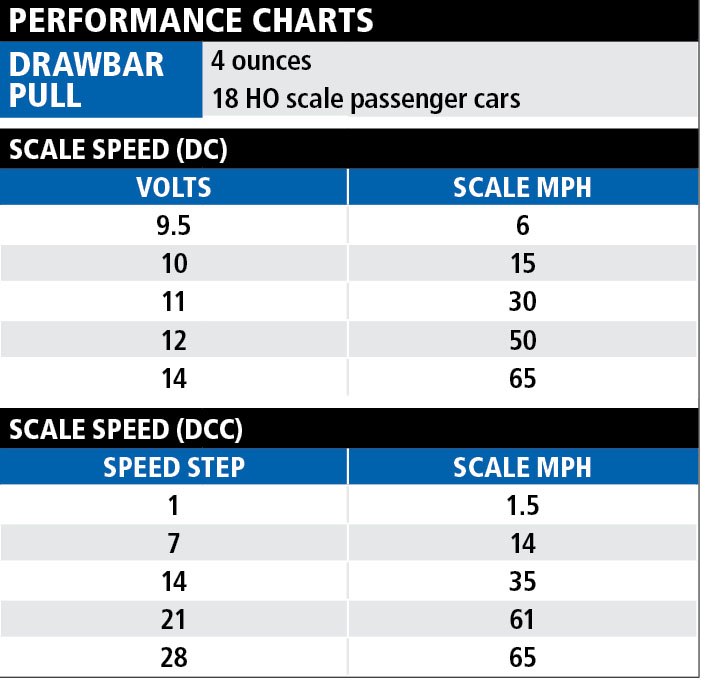

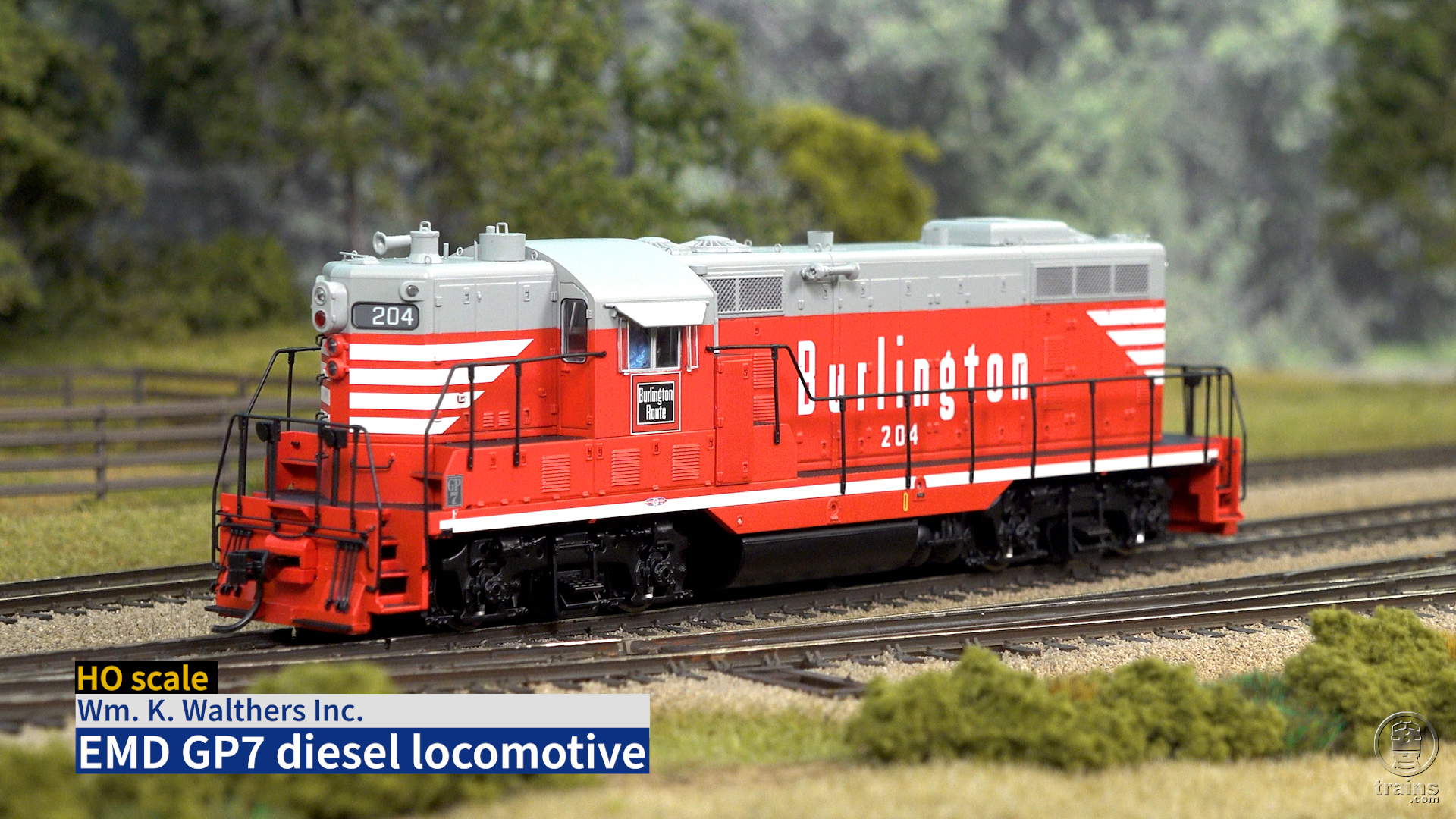
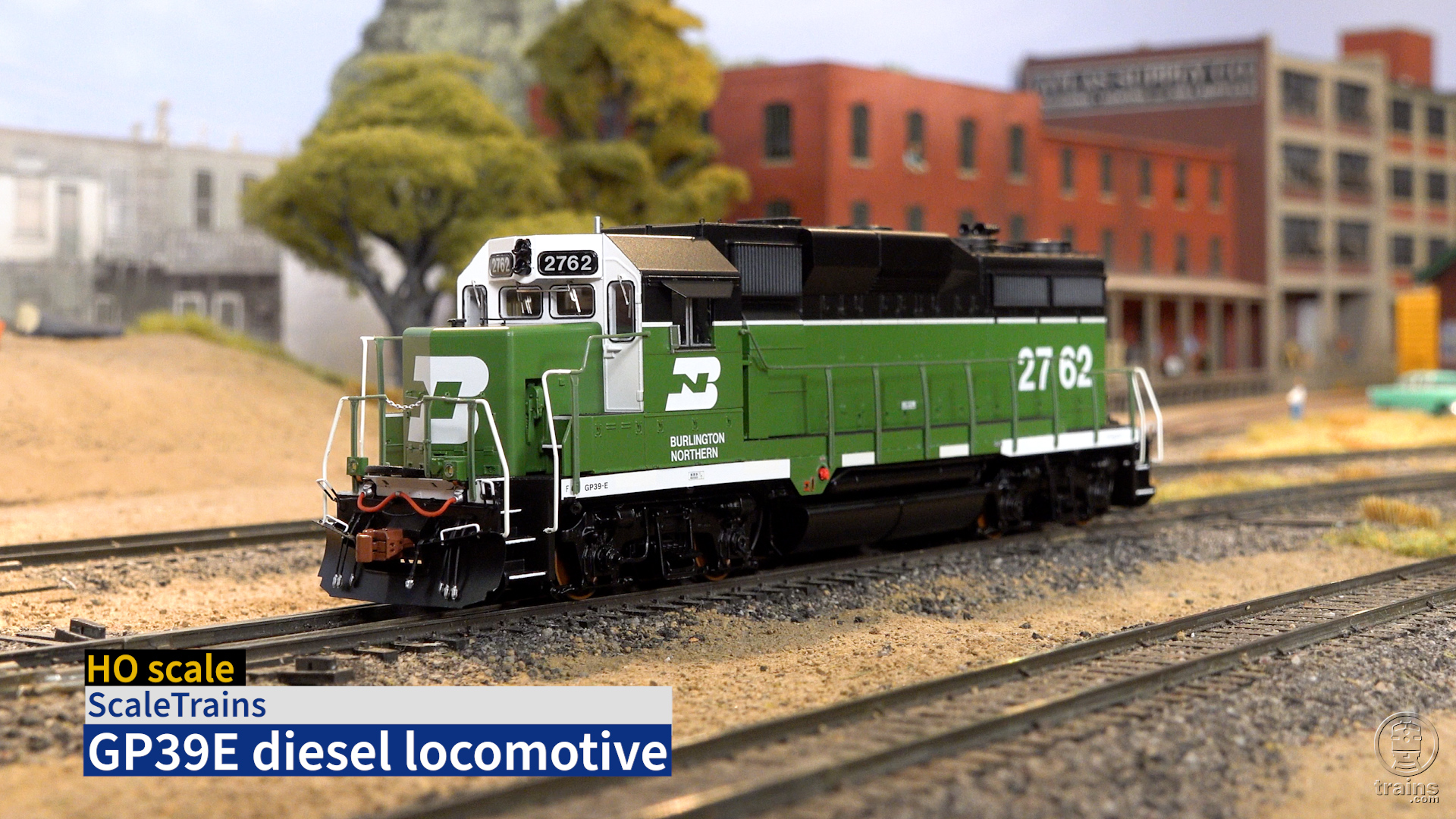
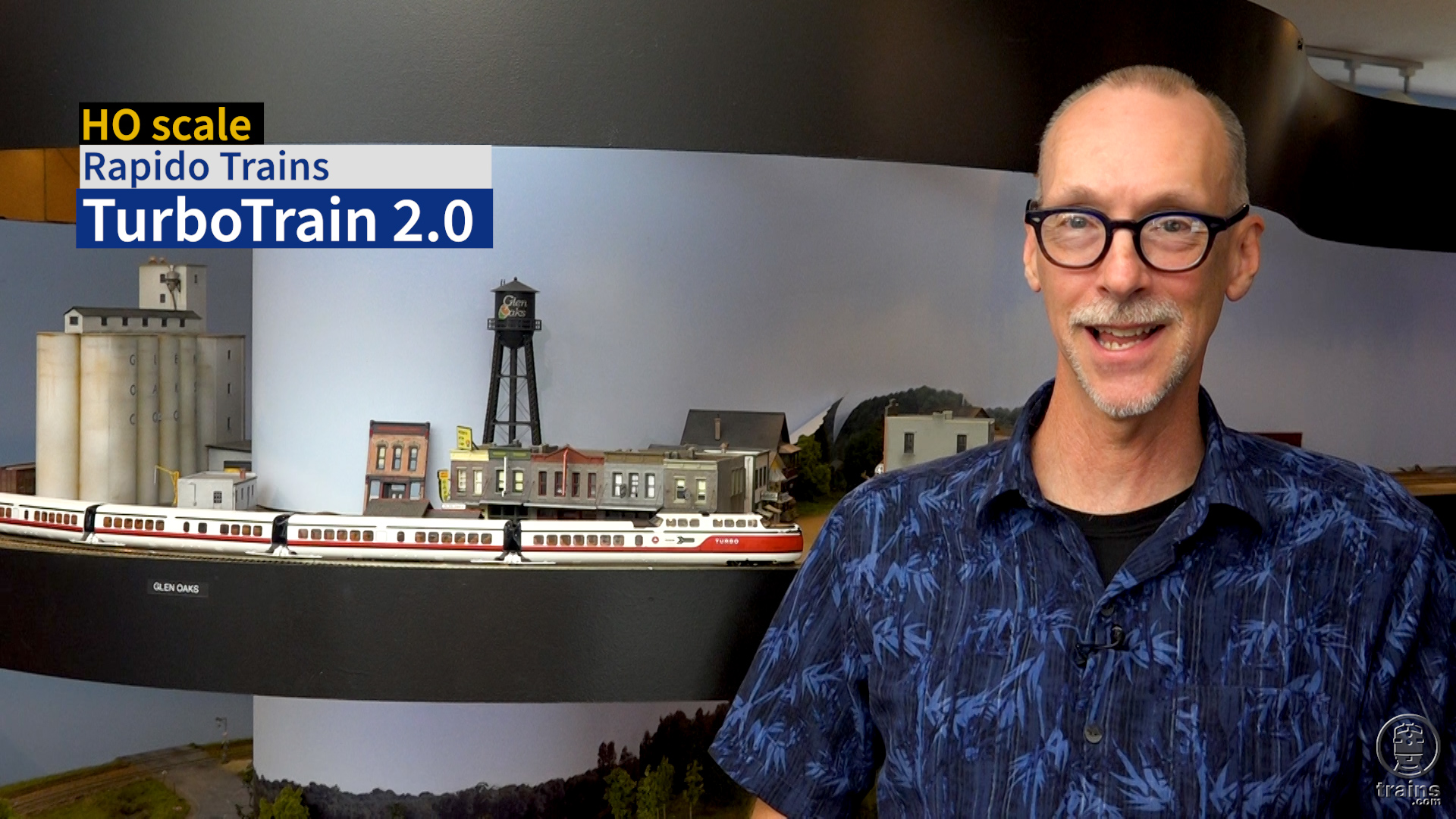
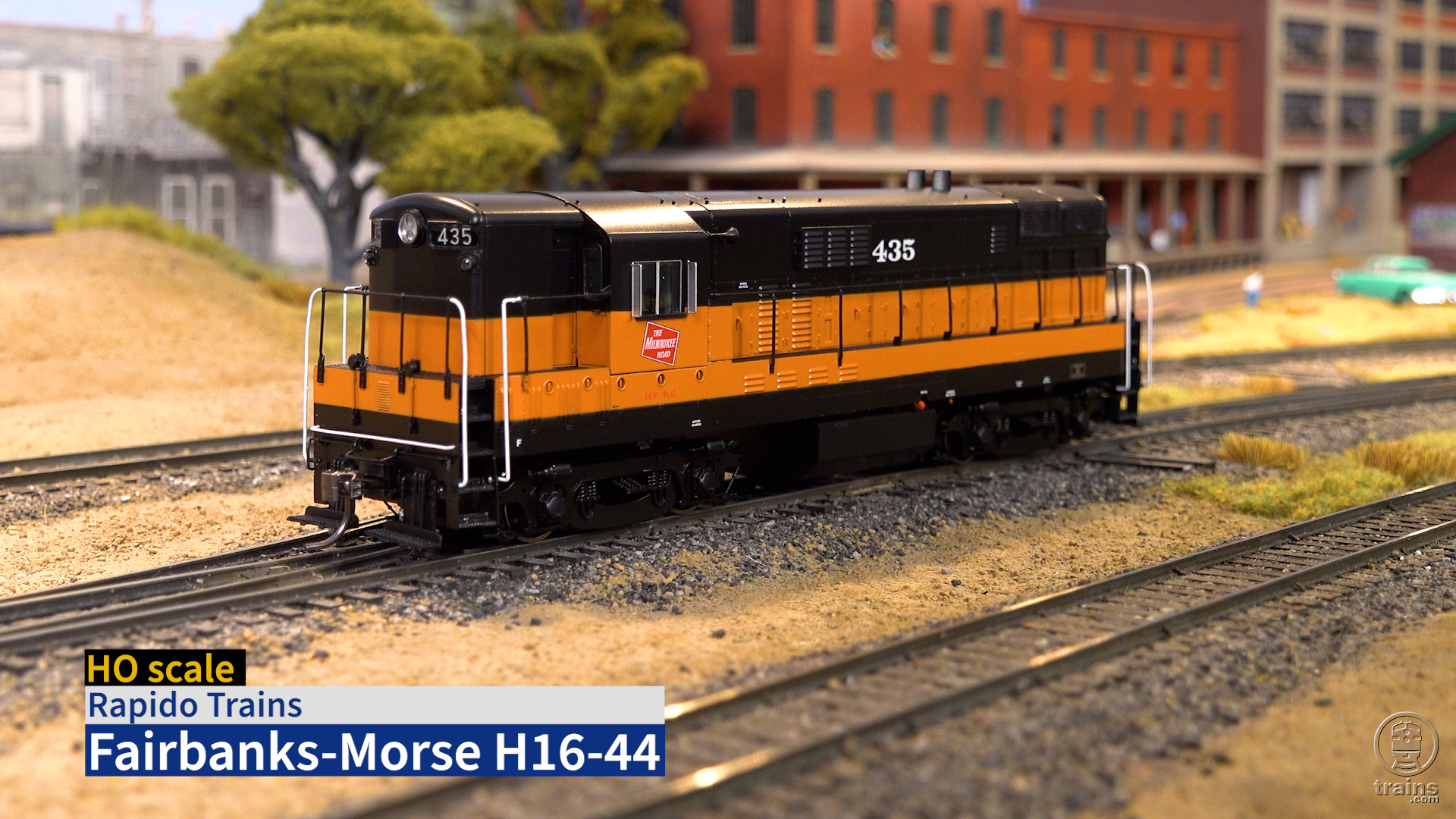




I recently these at a train show on a layout display. I noticed that the normal gap in the pilot (coupler) had a filler plate. I asked loco owner about this and he told me that it was included with the model. I rechecked my boxes and don’t see them. I seemed to have lost my manuals. Are these still available to purchase as a replacement part?
Just received my Walther’s Mainline SP Daylight PA-PB-PA consist and just finished programming the lead unit using JMRI on my layout. By chance, does anyone out there know the exact ESU decoder designation? I ran my model through the “read all” feature hoping that it would automatically identify the decoder, but I got a list a yard long from 1.0 all the way through 4.0 and economy. Any help out there and many thanks in advance. This is going to be a great addition to my what-if “Saguaro” consist. By the way… has anyone added lighting effects for the number boards and classification lights? John Walker Little Orleans, MD
Rapido is releasing their Alco PA later this year and the SRP is nearly double the the Walthers Mainline price. Any chance that MR can do a side-by-side comparison of the two products? The Alco PA’s on at the top of my wish list so this would be of great value to me and I am sure many other HO modelers. Thank you.
Robert, I would gladly trade the extra tractive effort of a third set of axles for the fact that you would have to lift the engine and spin the middle wheels by hand to know that is prototypically accurate.
Vast improvement since Athearn brought a PA/PB model back in the 1970’s. For that era, it was a fair model, the major flaw was the radiator shutters on the rear of the unit were wider that the width of the shell. Why is that wrong? Because ALCO built the units with the radiator shutters inside the outer shell walls. On the plus side, Athearn did have only two powered axles per truck (A-1-A). The middle axle was without a gear.
It should be simple for Walthers to do this; after all, hobbytown of Boston did it when they introduced both the PA and an EMD E unit in the late Fifties or early Sixties. And, the builders for both Balboa and Westside Models did it for the brass units.
Granted those two extra powered axles help in tractive effort; but it is not realistic.